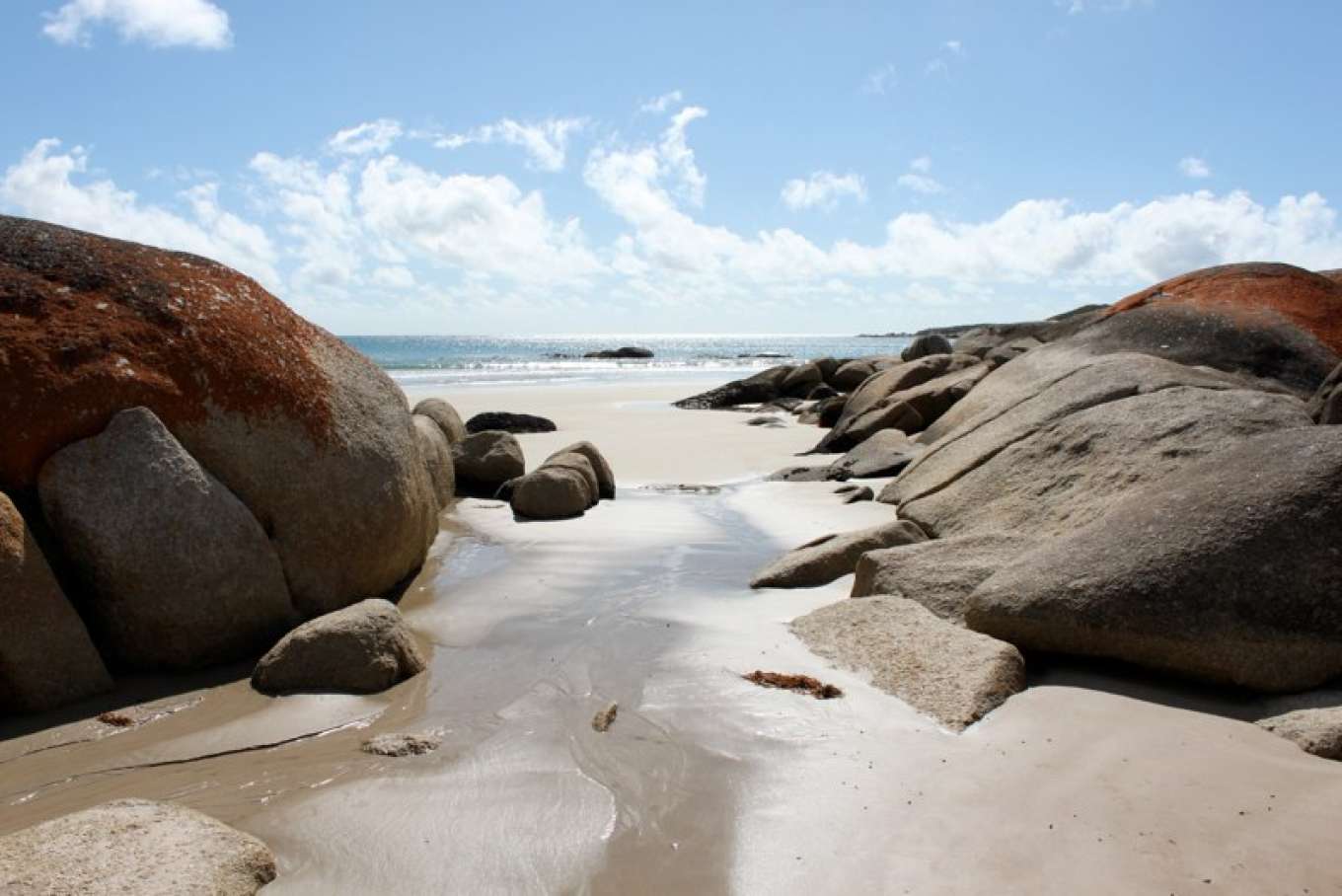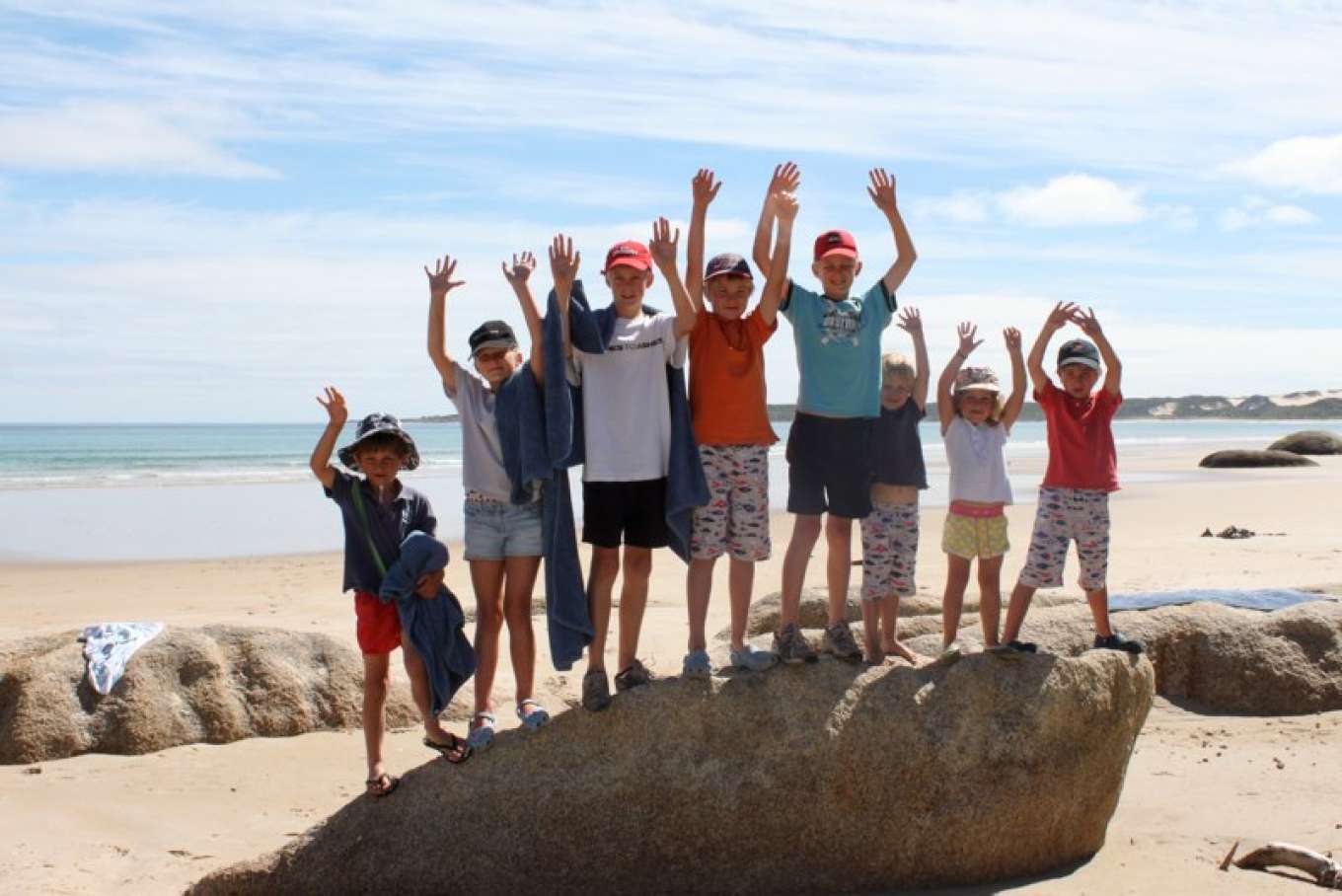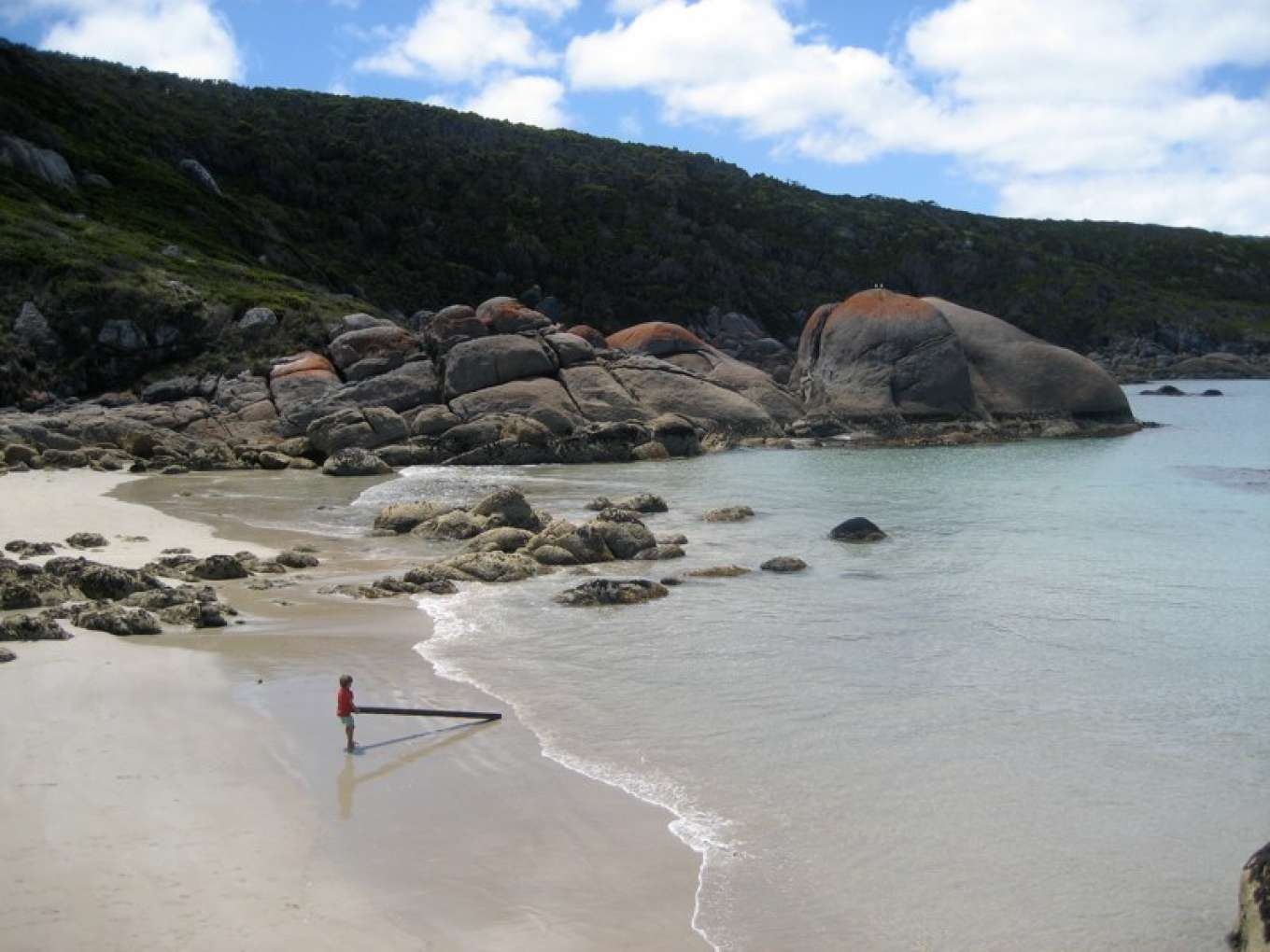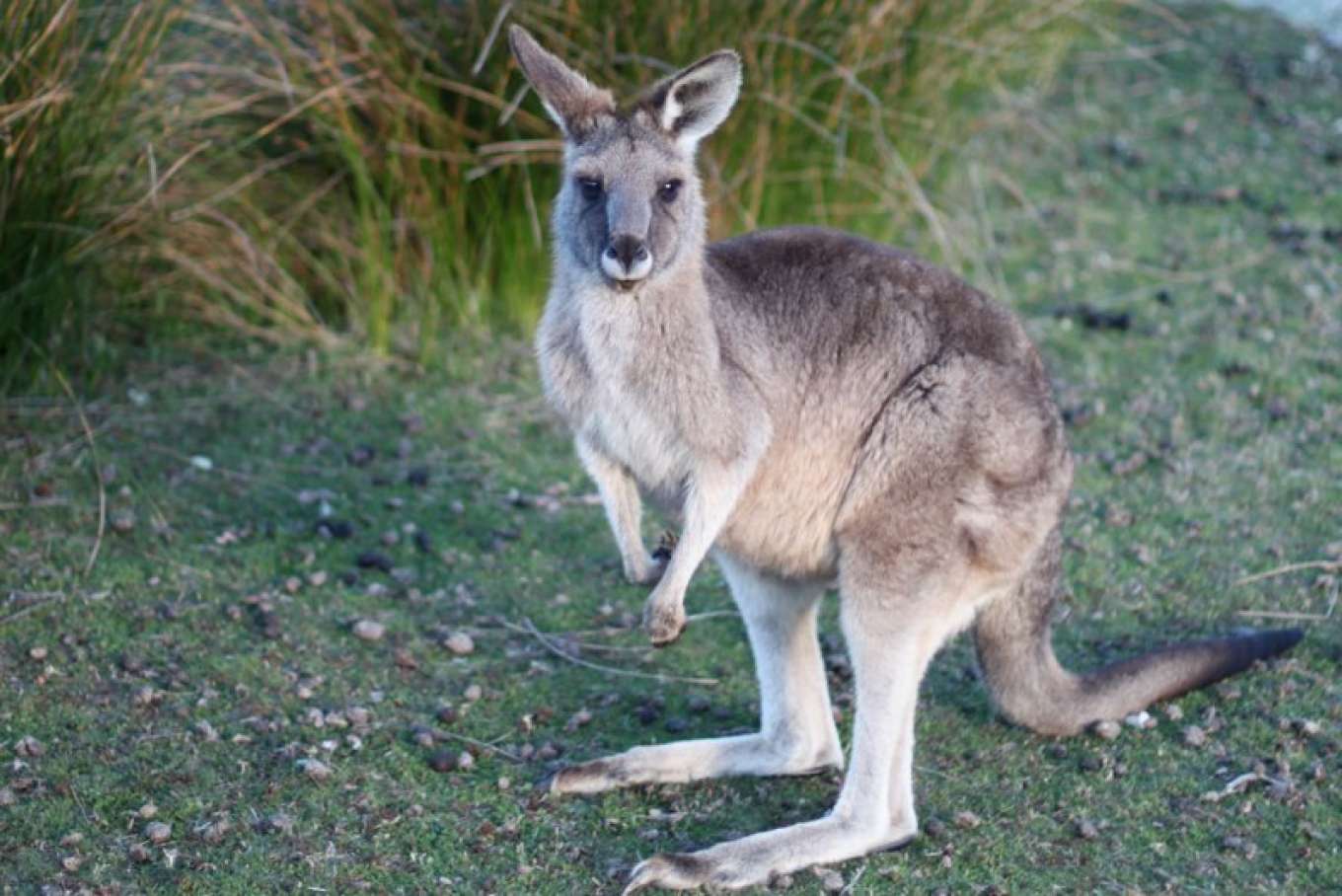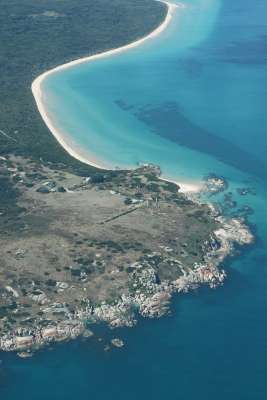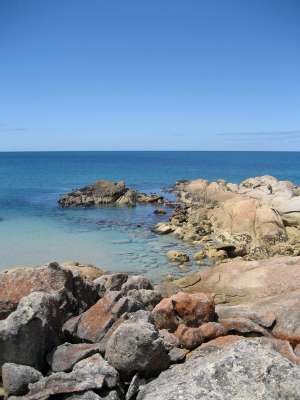Three Hummock Island
For many centuries the island was a summer subsistence place for aborigines of the north west tribe who gained access by swimming from adjoining Hunter Island across five kilometres of racing tides.
Its European discoverers were Bass and Flinders who named the island in 1798. More explorers, shipwrecked mariners and sailors followed. Guiseppe Garibaldi, the famous uniter of Italy, landed on the island in 1852 and left us with this ...
For many centuries the island was a summer subsistence place for aborigines of the north west tribe who gained access by swimming from adjoining Hunter Island across five kilometres of racing tides.
Its European discoverers were Bass and Flinders who named the island in 1798. More explorers, shipwrecked mariners and sailors followed. Guiseppe Garibaldi, the famous uniter of Italy, landed on the island in 1852 and left us with this accolade:
-O desert island of the Hunter Group - how many times have you pleasantly excited my imagination. When tired of this civilized society, so full of tyrants and gendarmes, I have often transported myself in my imagination into your gracious bosom where landing, for the first time, I was received by a flock of very beautiful partridges and where among ancient plants with tall trunks the most limpid and poetic rivulet was murmuring at which we quenched our thirst with great pleasure.
By the 1890s, the Burgess family was so well established that they were building sizeable ships at Chimney Corner, the protected cove on the island's Southwest coast. In 1951, the Alliston family, made their home on the island. In 1965, Eleanor Alliston wrote Escape to an Island, her classic description of island life. In 1978 the majority of the 7,400 hectares was declared a Nature Reserve.
Lodging
The Homestead sits nestled under established trees just a short stroll from the jetty on Chimney Corner. With sweeping views down Home Beach and across to nearby Hunter Island, the century-old Homestead is a remarkable place to stay. Recently renovated, the Homestead sleeps up to fourteen people in comfort , in five bedrooms. The three king bedrooms can be configured for twin share or for couples.
For many centuries the island was a summer subsistence place for aborigines of the north west tribe who gained access by swimming from adjoining Hunter Island across five kilometres of racing tides.
Its European discoverers were Bass and Flinders who named the island in 1798. More explorers, shipwrecked mariners and sailors followed. Guiseppe Garibaldi, the famous uniter of Italy, landed on the island in 1852 and left us with this accolade:
-O desert island of the Hunter Group - how many times have you pleasantly excited my imagination. When tired of this civilized society, so full of tyrants and gendarmes, I have often transported myself in my imagination into your gracious bosom where landing, for the first time, I was received by a flock of very beautiful partridges and where among ancient plants with tall trunks the most limpid and poetic rivulet was murmuring at which we quenched our thirst with great pleasure.
By the 1890s, the Burgess family was so well established that they were building sizeable ships at Chimney Corner, the protected cove on the island's Southwest coast. In 1951, the Alliston family, made their home on the island. In 1965, Eleanor Alliston wrote Escape to an Island, her classic description of island life. In 1978 the majority of the 7,400 hectares was declared a Nature Reserve.
Lodging
The Homestead sits nestled under established trees just a short stroll from the jetty on Chimney Corner. With sweeping views down Home Beach and across to nearby Hunter Island, the century-old Homestead is a remarkable place to stay. Recently renovated, the Homestead sleeps up to fourteen people in comfort , in five bedrooms. The three king bedrooms can be configured for twin share or for couples.


